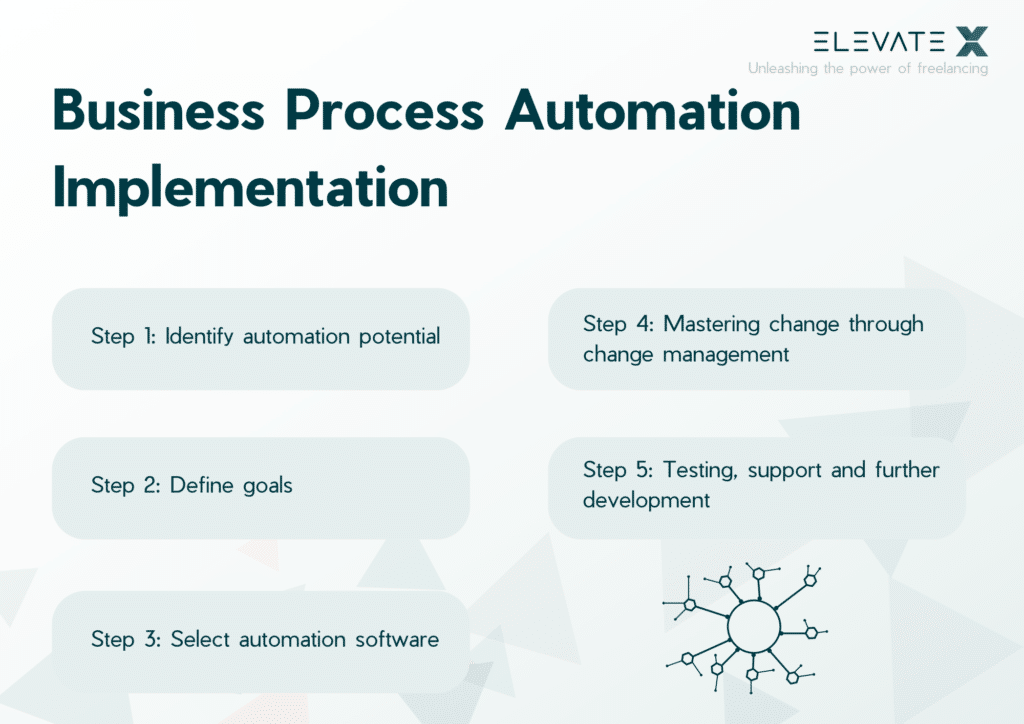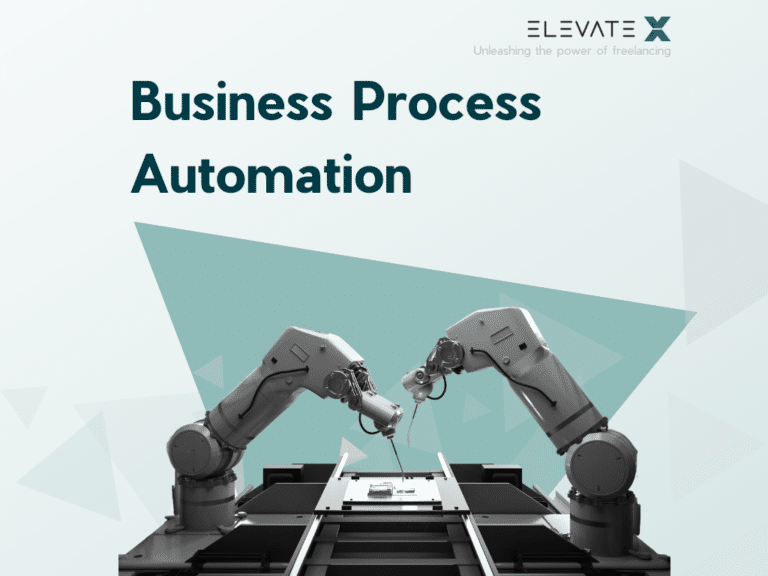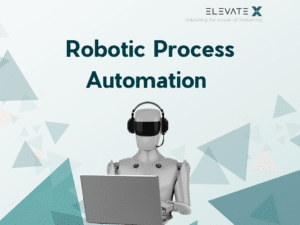With increasing digitization, holistic changes are taking place in companies: This also includes the automation of business processes in order to create time freedoms and, in parallel, to reduce the potential for human error. Business Process Automation (BPA for short) subsequently provides companies with the opportunity to automate simple as well as complex workflows and processes in order to realize efficiency gains and optimize workflows.
What Is A Business Process?
Before we go into detail about business process automation, which is put from theory into practice by an automation engineer, for example, we will first look at the contextual classification of a business process – after all, it is this process that is to be automated using software solutions.
Business processes are multi-stage sequences that are always subject to fixed rules and specifications and in which the individual subtasks build on one another. Consequently, the successful completion of a first activity leads to the second, then to the third, and finally to all further activities – in other words, a chain of tasks and activities is created, which together constitute a sequence and thus the business process itself.
At the end of a business process is the previously defined goal. This can be, for example
- the achieved availability of a product or service
- the processing of complaints, returns or, for example, warranty cases
- searching for, finding and acquiring new customers
- reactivating former customers through multi-level marketing strategies
- hiring personnel to fill certain gaps in the company or to expand capacities
This list of examples can be continued almost indefinitely, because various core processes, other HR tasks, or accounting processes, for example, are also holistically part of business processes.
KEY POINTS
- Business Process Automation serves as a generic term for automation achieved through software solutions.
- BPA focuses in particular on frequently recurring business processes which, without automation, would have to be performed again and again by employees
- in addition to time and thus economic advantages, successful automation also reduces the potential for errors
- one hurdle is to “bring along” employees, who often resist automation/conversion, possibly also because they fear to be made obsolete by it
What Is Business Process Automation (BPA)?
As we have just seen, companies have a multitude of business processes taking place across departments at any given time – involving very different employees and with equally different goals. Whether android developers, data analysts, business analysts, or IT systems engineers, for example, they are all involved in different business processes, with varying frequency and intensity – which in turn characterizes those very processes as dependent on these professionals.
Business process automation, which incidentally goes back historically to Henry Ford and his invention of assembly line work, addresses the above-mentioned dependency. Where many skilled workers/employees are occupied with different tasks that also exhibit mutual dependency, efficiency losses increase, as does the potential for human error. The automation of business processes changes just that: efficiency gains are exposed, human errors are completely neutralized by the automated completion by software solutions.
Software solutions are subsequently developed that handle the individual tasks and steps of a business process completely independently. Business Process Automation is therefore particularly advantageous for tasks that are recurring and often mainly time-consuming, but do not require exceptional expertise or individual human intervention. It makes sense to entrust these tasks to software that automates the same processes in the same way within a framework defined by specifications and rules.
In some cases, business process automation today is also supplemented by new types of technology, such as machine learning or artificial intelligence. As a result, even more complex processes can be fully or partially automated.
What Is The Difference Between Business Process Automation (BPA) And Business Process Management (BPM)?
Both terms may be similar and also have common points of intersection, but they differ in detail when examined more closely. BPM always focuses on the company as a whole, while BPA focuses on individual, clearly defined processes. Furthermore, BPM, again focusing on the big picture, provides the architecture, which is then used by parts of business process automation under certain circumstances.
Depending on how BPA and BPM are used and established in a company, both subareas can operate together or separately. With regard to the software used, however, mutual dependencies often arise because, as explained at the beginning, BPM is responsible for the architecture which later presupposes successful automation by BPA. Incidentally, process management is not only used in private-sector companies, but also, for example, in the administration at the federal level.
How Do You Implement Business Process Automation?
The use of software alone is by no means the equivalent of successful business process automation. It must be preceded by a pragmatic approach that clearly defines and captures opportunities as well as potential problems and goals. In the very first step, companies must therefore obtain an overview of which individual steps and rules are actually linked to a business process, which employees are currently involved in it, and what the time dependencies are between sub-steps.
In a second step, the goals are defined, i.e., what is to be achieved with business process automation, where human intervention is to become completely obsolete, and where, for example, humans still act as an inspection authority. Particularly in the initial phases, the course of business process automation must be consistently monitored, because the first implementation rarely corresponds to the optimal realization of the BPA project. Sometimes, automated processes initially fall short of expectations, requiring further fine-tuning or even a complete restructuring of the automation.
Employees in the company should be involved in this process – even those who lose a previous part of their work as a result of business process automation. Since business process automation doesn’t usually happen in a vacuum, automation will also have an impact on the workforce. Continuing education and training can help make this transition process easier for employees.
Don’t forget: BPA is always a long-term and, in some cases, continuously changing process. A long-term vision, for example anchored in the company’s digitization strategy, is therefore considered a basic prerequisite for successful and actually efficiency-enhancing automation of business processes.
What Are The Phases In Business Process Automation?
The process of implementation can be divided into five BPA phases as follows.
Step 1: Identify automation potential
Companies identify frequently repeated processes and determine which of them should henceforth be automated.
Step 2: Define goals
Goals are defined both for the individual process and for the company as a whole, which are to be achieved by business process automation in the medium and long term.
Step 3: Select automation software
It should not fail because of the automation software – the market is extremely diverse and is still in a state of constant growth. But not all software is suitable for every type of automation and for every process in general. It is therefore up to those responsible to determine which automation software best suits the goals and organizational structure in the company – just as they choose whether the software is cloud-based, server-based or mobile, for example.
Step 4: Mastering change through change management
Not all employees look positively on internal company changes. Change management describes the process in which those responsible transparently demonstrate and explain why these changes are taking place and what benefits both the company and employees will gain as a result.
Step 5: Testing, support and further development
If the software is used successfully and business process automation has taken place, its success must be continuously put to the test. Software solutions must also be continuously maintained, and feedback from employees is also important at this point, who may be able to contribute further ideas for increasing efficiency based on their own experience. Companies can also examine how business process automation that has already taken place can be expanded, for example by connecting further automation to processes that have already been automated.

Which Experts Implement BPA?
… and many other specialists are or can be involved in business process automation in one way or another. If the automation software is developed or customized independently, a number of developers in the respective programming languages and, for example, UX or UI designers would also be involved.
Looking for an automation engineer?
What Are The Advantages And Disadvantages Of BPA?
The advantages of Business Process Automation include:
- Acceleration of processes
- Relieving the workload of employees through automation
- Neutralization of bottlenecks
- Reduction of regulatory risks and human error potential
- Increases productivity
- lays the foundation for progress instead of blocking working time with administrative processes
In general, therefore, business process automation generates significant efficiency gains, which can of course also achieve economic benefits or cost savings. At the same time, companies can be sure of strict, correct implementation of regulatory requirements through automation. Employees can concentrate on important tasks instead of repetitive, time-consuming business processes.
Implemented correctly, business process automation usually does not cause any disadvantages. However, the process may not be well received by employees, who could lose their jobs due to automation. Furthermore, business process automation is only as good as the automation software and the concept behind the automation.
Business Process Automation (BPA) describes the automation of business processes, through the use of automation software. Tasks within a business process are therefore automated by software instead of humans.
BPM focuses on the architecture as a whole and looks at processes from an end-to-end perspective. Meanwhile, BPA is about automating/digitizing individual, predefined business processes.
Companies can generate efficiency gains, along with significant economic benefits. At the same time, automation reduces the potential for human error and relieves employees who previously had to perform these repetitive tasks independently.








